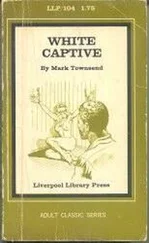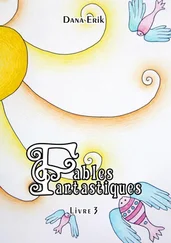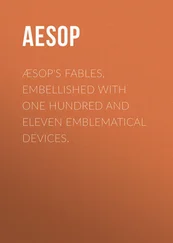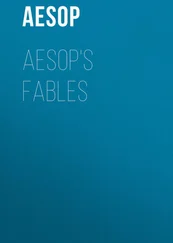Translated Townsend - Aesop's Fables
Здесь есть возможность читать онлайн «Translated Townsend - Aesop's Fables» весь текст электронной книги совершенно бесплатно (целиком полную версию без сокращений). В некоторых случаях можно слушать аудио, скачать через торрент в формате fb2 и присутствует краткое содержание. Жанр: Старинная литература, на английском языке. Описание произведения, (предисловие) а так же отзывы посетителей доступны на портале библиотеки ЛибКат.
- Название:Aesop's Fables
- Автор:
- Жанр:
- Год:неизвестен
- ISBN:нет данных
- Рейтинг книги:5 / 5. Голосов: 1
-
Избранное:Добавить в избранное
- Отзывы:
-
Ваша оценка:
- 100
- 1
- 2
- 3
- 4
- 5
Aesop's Fables: краткое содержание, описание и аннотация
Предлагаем к чтению аннотацию, описание, краткое содержание или предисловие (зависит от того, что написал сам автор книги «Aesop's Fables»). Если вы не нашли необходимую информацию о книге — напишите в комментариях, мы постараемся отыскать её.
Aesop's Fables — читать онлайн бесплатно полную книгу (весь текст) целиком
Ниже представлен текст книги, разбитый по страницам. Система сохранения места последней прочитанной страницы, позволяет с удобством читать онлайн бесплатно книгу «Aesop's Fables», без необходимости каждый раз заново искать на чём Вы остановились. Поставьте закладку, и сможете в любой момент перейти на страницу, на которой закончили чтение.
Интервал:
Закладка:
On the invitation of Croesus he fixed his residence at Sardis, and was employed by that monarch in various difficult and delicate affairs of State. In his discharge of these commissions he visited the different petty republics of Greece. At one time he is found in Corinth, and at another in Athens, endeavouring, by the narration of some of his wise fables, to reconcile the inhabitants of those cities to the administration of their respective rulers Periander and Pisistratus. One of these ambassadorial missions, undertaken at the command of Croesus, was the occasion of his death. Having been sent to Delphi with a large sum of gold for distribution among the citizens, he was so provoked at their covetousness that he refused to divide the money, and sent it back to his master. The Delphians, enraged at this treatment, accused him of impiety, and, in spite of his sacred character as ambassador, executed him as a public criminal. This cruel death of Aesop was not unavenged. The citizens of Delphi were visited with a series of calamities, until they made a public reparation of their crime; and, “The blood of Aesop” became a well-known adage, bearing witness to the truth that deeds of wrong would not pass unpunished. Neither did the great fabulist lack posthumous honors; for a statue was erected to his memory at Athens, the work of Lysippus, one of the most famous of Greek sculptors. Phaedrus thus immortalizes the event:
Aesopo ingentem statuam posuere Attici, Servumque collocarunt aeterna in basi: Patere honoris scirent ut cuncti viam; Nec generi tribui sed virtuti gloriam.
These few facts are all that can be relied on with any degree of certainty, in reference to the birth, life, and death of Aesop. They were first brought to light, after a patient search and diligent perusal of ancient authors, by a Frenchman, M. Claude Gaspard Bachet de Mezeriac, who declined the honor of being tutor to Louis XIII of France, from his desire to devote himself exclusively to literature. He published his Life of Aesop, Anno Domini 1632. The later investigations of a host of English and German scholars have added very little to the facts given by M. Mezeriac. The substantial truth of his statements has been confirmed by later criticism and inquiry. It remains to state, that prior to this publication of M. Mezeriac, the life of Aesop was from the pen of Maximus Planudes, a monk of Constantinople, who was sent on an embassy to Venice by the Byzantine Emperor Andronicus the elder, and who wrote in the early part of the fourteenth century. His life was prefixed to all the early editions of these fables, and was republished as late as 1727 by Archdeacon Croxall as the introduction to his edition of Aesop. This life by Planudes contains, however, so small an amount of truth, and is so full of absurd pictures of the grotesque deformity of Aesop, of wondrous apocryphal stories, of lying legends, and gross anachronisms, that it is now universally condemned as false, puerile, and unauthentic.[101] It is given up in the present day, by general consent, as unworthy of the slightest credit. G.F.T.
Footnotes
[Footnote 101: M. Bayle thus characterises this Life of Aesop by Planudes, “Tous les habiles gens conviennent que c’est un roman, et que les absurdites grossieres qui l’on y trouve le rendent indigne de toute.” Dictionnaire Historique. Art. Esope.]
[Footnote 1: A History of the Literature of Ancient Greece, by K. O. Mueller. Vol. i, p. 191. London, Parker, 1858.]
[Footnote 2: Select Fables of Aesop, and other Fabulists. In three books, translated by Robert Dodsley, accompanied with a selection of notes, and an Essay on Fable. Birmingham, 1864. P. 60.]
[Footnote 3: Some of these fables had, no doubt, in the first instance, a primary and private interpretation. On the first occasion of their being composed they were intended to refer to some passing event, or to some individual acts of wrong-doing. Thus, the fables of the “Eagle and the Fox” and of the “Fox and Monkey” are supposed to have been written by Archilochus, to avenge the injuries done him by Lycambes. So also the fables of the “Swollen Fox” and of the “Frogs asking a King” were spoken by Aesop for the immediate purpose of reconciling the inhabitants of Samos and Athens to their respective rulers, Periander and Pisistratus; while the fable of the “Horse and Stag” was composed to caution the inhabitants of Himera against granting a bodyguard to Phalaris. In a similar manner, the fable from Phaedrus, the “Marriage of the Sun,” is supposed to have reference to the contemplated union of Livia, the daughter of Drusus, with Sejanus the favourite, and minister of Trajan. These fables, however, though thus originating in special events, and designed at first to meet special circumstances, are so admirably constructed as to be fraught with lessons of general utility, and of universal application.]
[Footnote 4: Hesiod. Opera et Dies, verse 202.]
[Footnote 5: Aeschylus. Fragment of the Myrmidons. Aeschylus speaks of this fable as existing before his day. See Scholiast on the Aves of Aristophanes, line 808.]
[Footnote 6: Fragment. 38, ed. Gaisford. See also Mueller’s History of the Literature of Ancient Greece, vol. i. pp. 190-193.]
[Footnote 7: M. Bayle has well put this in his account of Aesop. “Il n’y a point d’apparence que les fables qui portent aujourd’hui son nom soient les memes qu’il avait faites; elles viennent bien de lui pour la plupart, quant a la matiere et la pensee; mais les paroles sont d’un autre.” And again, “C’est donc a Hesiode, que j’aimerais mieux attribuer la gloire de l’invention; mais sans doute il laissa la chose tres imparfaite. Esope la perfectionne si heureusement, qu’on l’a regarde comme le vrai pere de cette sorte de production.” M. Bayle. Dictionnaire Historique.]
[Footnote 8: Plato in Phoedone.]
[Footnote 9: Apologos en! misit tibi Ab usque Rheni limite Ausonius nomen Italum Praeceptor Augusti tui Aesopiam trimetriam; Quam vertit exili stylo Pedestre concinnans opus Fandi Titianus artifex. Ausonii Epistola, xvi. 75-80.]
[Footnote 10: Both these publications are in the British Museum, and are placed in the library in cases under glass, for the inspection of the curious.]
[Footnote 11: Fables may possibly have been not entirely unknown to the mediaeval scholars. There are two celebrated works which might by some be classed amongst works of this description. The one is the “Speculum Sapientiae,” attributed to St. Cyril, Archbishop of Jerusalem, but of a considerably later origin, and existing only in Latin. It is divided into four books, and consists of long conversations conducted by fictitious characters under the figures the beasts of the field and forest, and aimed at the rebuke of particular classes of men, the boastful, the proud, the luxurious, the wrathful, &c. None of the stories are precisely those of Aesop, and none have the concinnity, terseness, and unmistakable deduction of the lesson intended to be taught by the fable, so conspicuous in the great Greek fabulist. The exact title of the book is this: “Speculum Sapientiae, B. Cyrilli Episcopi: alias quadripartitus apologeticus vocatus, in cujus quidem proverbiis omnis et totius sapientiae speculum claret et feliciter incipit.” The other is a larger work in two volumes, published in the fourteenth century by Caesar Heisterbach, a Cistercian monk, under the title of “Dialogus Miraculorum,” reprinted in 1851. This work consists of conversations in which many stories are interwoven on all kinds of subjects. It has no correspondence with the pure Aesopian fable.]
[Footnote 12: Post-medieval Preachers, by S. Baring-Gould. Rivingtons, 1865.]
[Footnote 13: For an account of this work see the Life of Poggio Bracciolini, by the Rev. William Shepherd. Liverpool. 1801.]
Читать дальшеИнтервал:
Закладка:
Похожие книги на «Aesop's Fables»
Представляем Вашему вниманию похожие книги на «Aesop's Fables» списком для выбора. Мы отобрали схожую по названию и смыслу литературу в надежде предоставить читателям больше вариантов отыскать новые, интересные, ещё непрочитанные произведения.
Обсуждение, отзывы о книге «Aesop's Fables» и просто собственные мнения читателей. Оставьте ваши комментарии, напишите, что Вы думаете о произведении, его смысле или главных героях. Укажите что конкретно понравилось, а что нет, и почему Вы так считаете.












